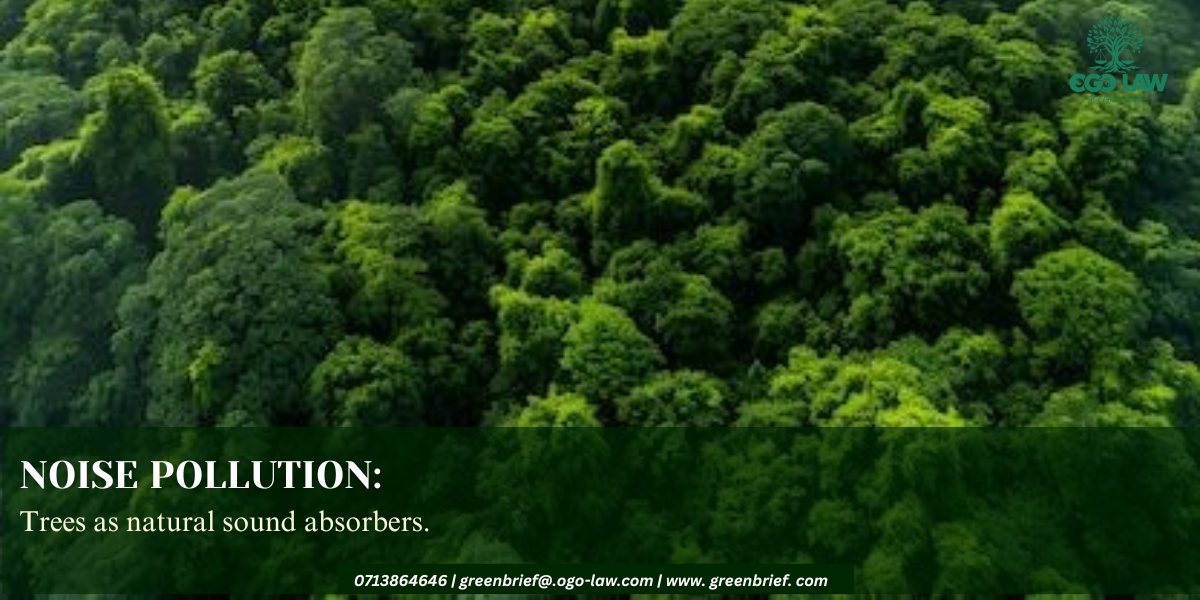Noise pollution is considered one of the most overlooked environmental issues especially in urban areas yet these areas are increasingly becoming noisier due to increase in traffic, industrial activities, construction and other commercial activities. The Environmental Management and Coordination Act Cap.387 under section 2 defines noise as any undesirable sound that is intrinsically objectionable or that may cause adverse effects on human health or the environment.
Additionally, the Environmental Management and Co-ordination (Noise and Excessive Vibration Pollution) (Control) Regulations, Legal Notice 61 of 2019, regulates permissible noise levels, factors to consider when determining if noise is loud, unreasonable, unnecessary or unusual as well as providing offences for those who contravene the regulations. Continuous exposure to excessive noise has been stated to be harmful to human beings and can have several effects which include but are not limited to poor sleep quality, stress and anxiety, noise induced hearing loss, reduced productivity, effect on birth outcomes and cardiovascular diseases. On the other hand, noise pollution also disrupts ecosystems thus altering the behaviour and communication of wildlife.
The Courts in a number of decided cases such as the Amani Residents Welfare Association/Mirema) (Suing on behalf of the Resident of Mirema Estate, Nairobi) v Senteu t/a Cocorico Wines & 5 others [2024] KEELC 5172 (KLR) have also taken a front line in recognizing one of the components of a clean and healthy environment to be the prevention of noise pollution. Be that as it may, noise pollution is still a major problem due to lack of consistent enforcement of its Regulations. Some of the factors considered when determining excessive noise as per the Noise and Excessive Vibration Pollution Control Regulations include:- (a) time of the day; (b) proximity to residential area; (c) whether the noise is recurrent, intermittent or constant; (d) level and intensity of the noise; (d) enhancement of the noise by any type of electronic or mechanical means; and (e) whether the noise can be controlled without much effort or expense to the person making it.
With that in mind, then the question turns to how do we use trees to naturally absorb noise? This has a lot to do with the structure of the tree such as height, branching structure, shape and density of the leaf, bark texture and wood density. The noise is absorbed, deflected or scattered when sound wave energy is taken in and some of the energy is lost and converted into other forms of energy such as heat energy.
Therefore, as an urban planner or a proponent of green infrastructure it is critical that in this day and age to integrate trees in your architectural designs especially in urban areas to counter noise pollution. This can be done by:-
a. Strategically placing tree belts along highways, railways and industrial zones.
b. Provision of green spaces within urban centers to not only absorb the noise but also improve the air quality.
c. Rooftop vegetation – Considering the number of high rise buildings coming up in urban areas, it is critical for developers and urban planners to consider green rooftops that shall help in reducing noise pollution in such buildings through absorption of the sound or vertical gardens in the buildings to enhance sound-dampening.
d. Grass covered pathways – Depending on the landscape, the use of grass-covered pathways may be used to reduce noise from ground surfaces.
e. porous concrete – Porous concrete as part of the green infrastructure aids in water absorption to prevent flooding while at the same time due to the interaction between pavement texture and vehicle tyres, porous concrete can aid in reduction of noise pollution.





